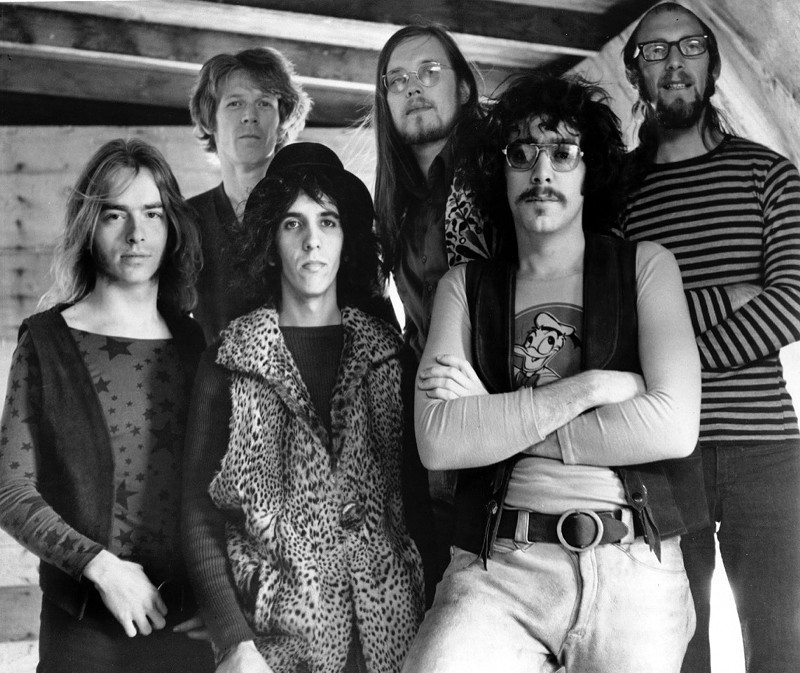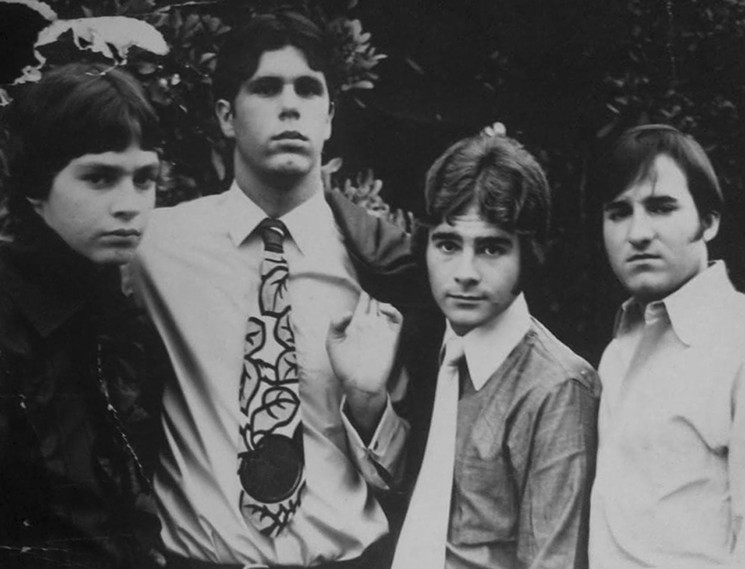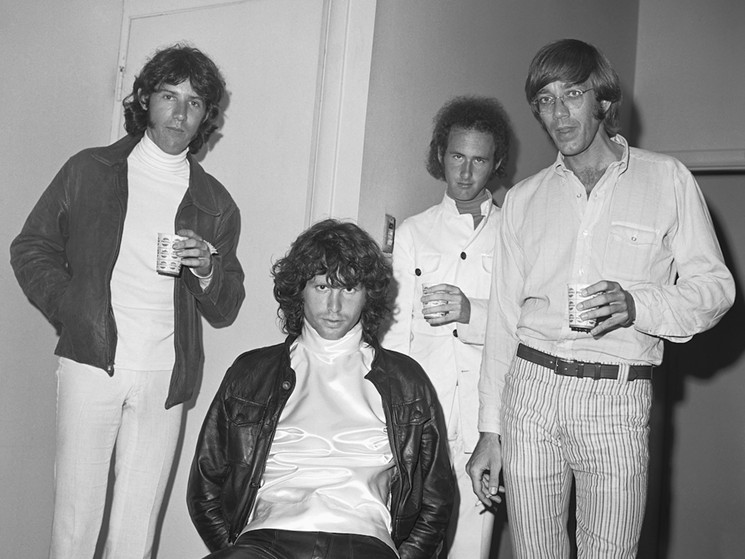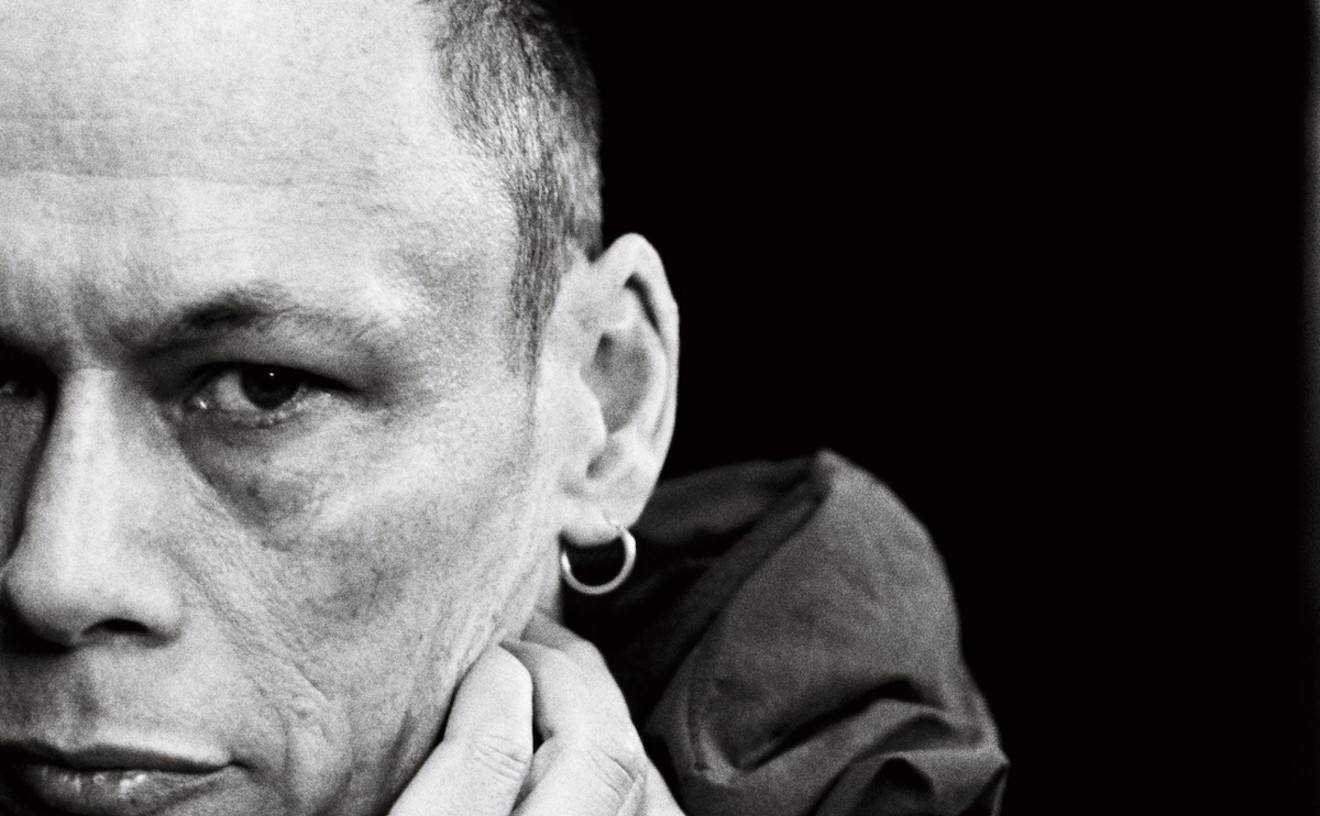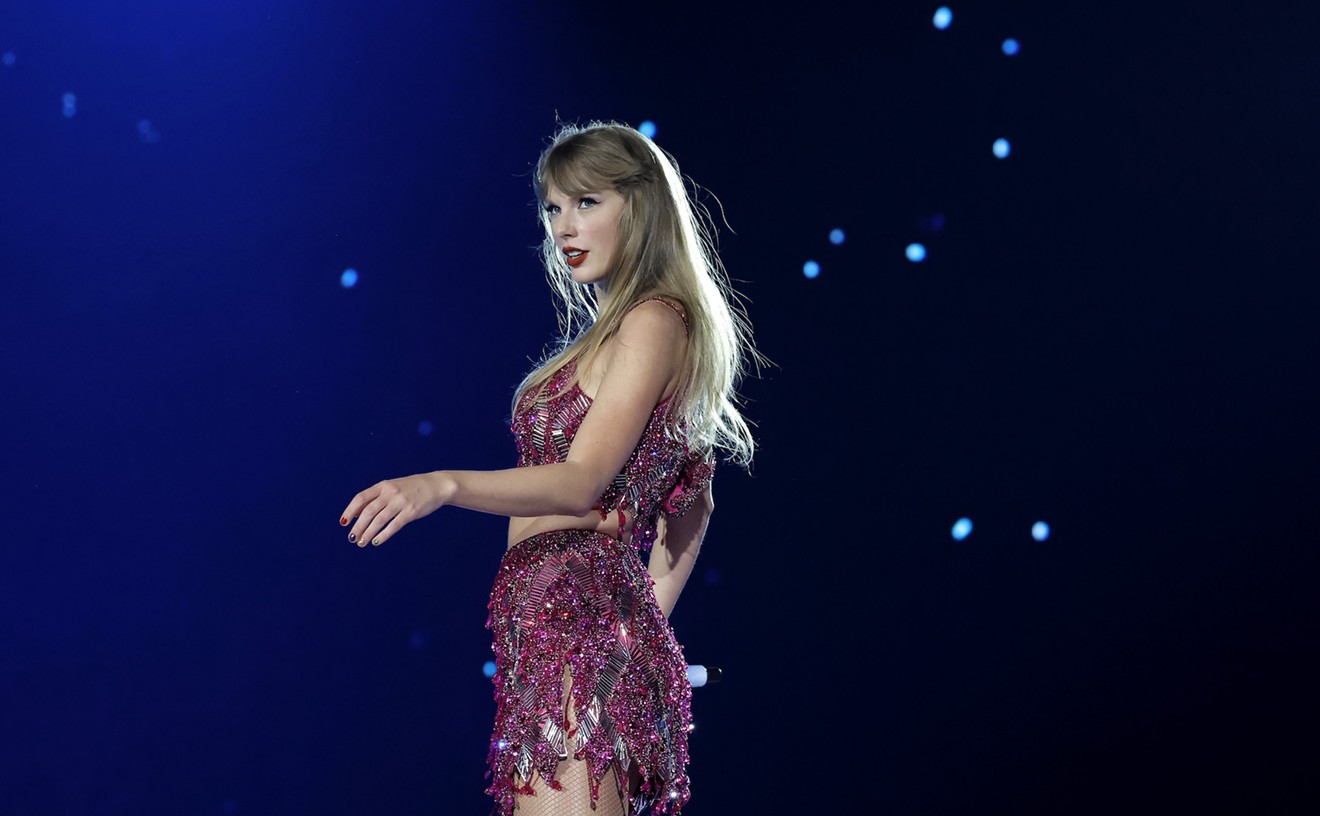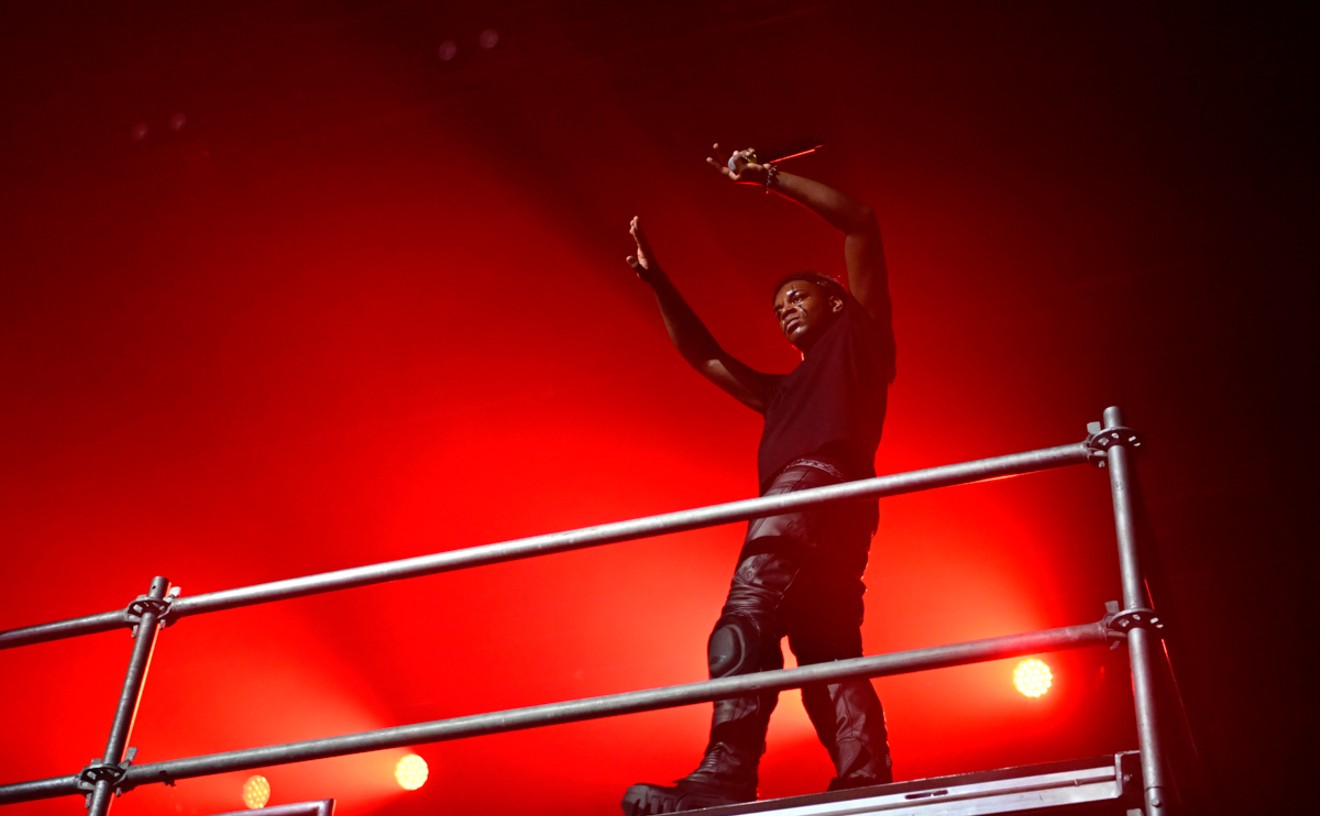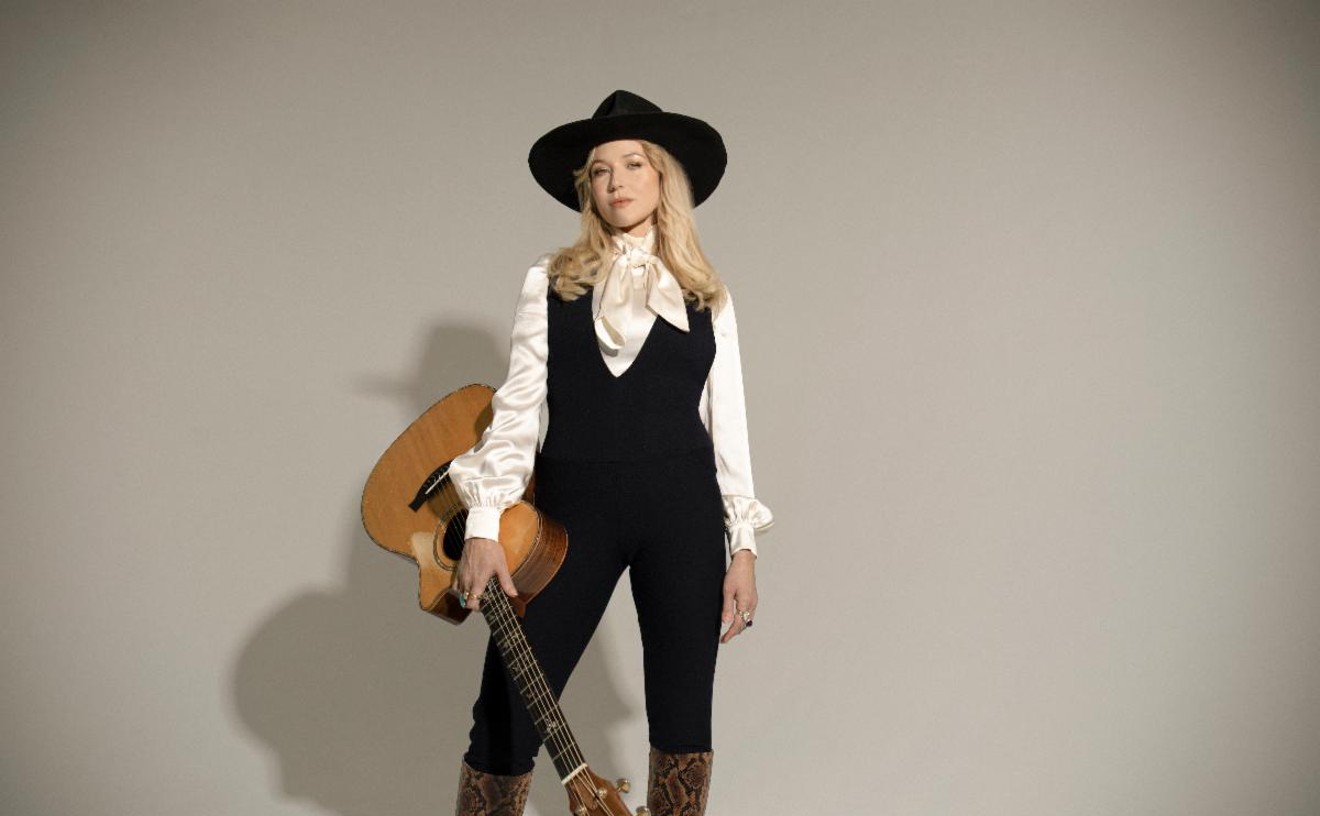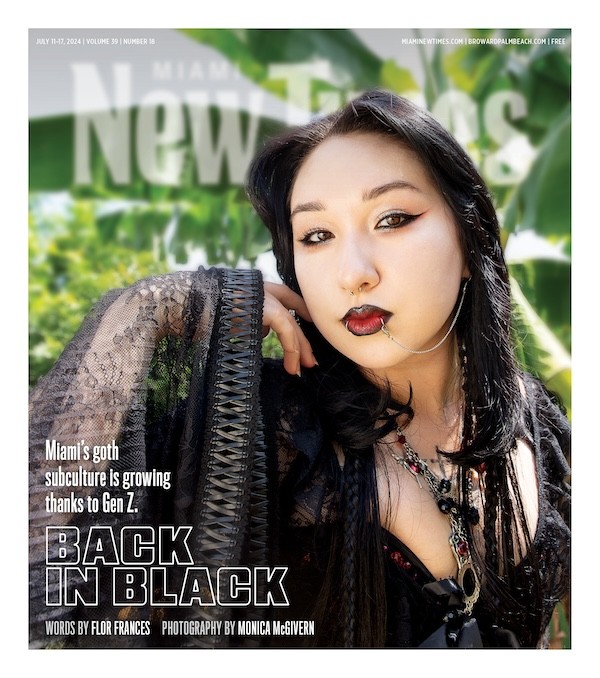On one of those stages stood Frank Zappa and his California-based avant-garde band the Mothers of Invention. They'd had come to town for a two-night stint in support of their newly released third studio album, We're Only in It for the Money, and to christen Miami's newest and biggest nightclub devoted to the emerging genre of psychedelic rock.
At the time, local radio was dominated by pop and R&B, which meant the owners of Thee Image had their work cut out for them. And perhaps not surprisingly, Thee Image's chapter in the annals of music history turned out to be a short one. Still, in its 13 months of existence, the venue served as a gathering place for Miami's incipient hippie crowd, whose long-haired adherents were longing for a home base, one where they could groove to the psych-rock sounds that were exploding across the country courtesy of acts like Zappa's, not to mention the Doors, the Grateful Dead, and Led Zeppelin.
While the scene flourished in cities like Los Angeles, San Francisco, London, and Paris, Miami had only a brief, shining flicker in the orange sunshine, the dimming of which roughly corresponded to the night in March 1969 when a drunken Doors frontman Jim Morrison infamously exposed himself — or did he? — in front of 12,000 fans at Dinner Key Auditorium in Coconut Grove.
At any rate, what is now a sterile Publix surrounded by a canyon of condos was once an escape to a musical realm where, on any given night, 1,500 heads could blissfully turn on, tune in, and, if they were so inclined, drop out.
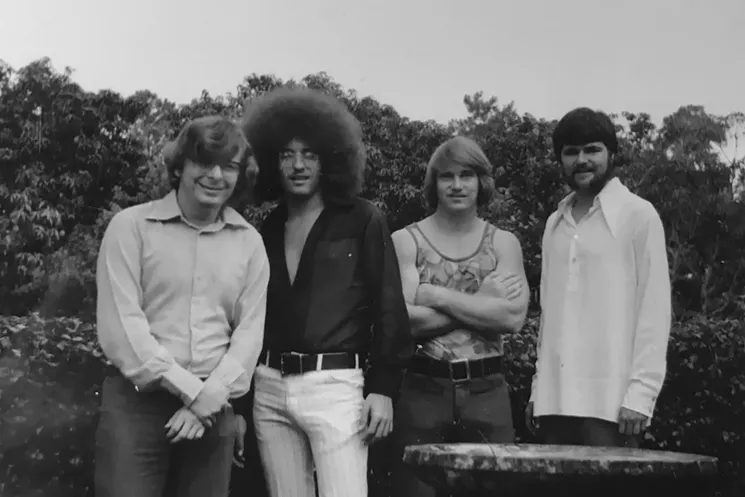
Formed in 1964, the Echo was the go-to backing band for any big act that came to town.
Photo courtesy of Don Fedele
A scene emerges
Mike Pinera, Tampa-born cofounder of the Sixties psych-rock band Blues Image, remembers Thee Image all too well."We came from Tampa. We were the number-one band there. Everyone said we should go to Miami; they’d understand you more," Pinera tells New Times from his home in Southern California. "[Miami] was more R&B, pop music. We were playing a lot more British blues like the Yardbirds. We had congas. We had a novel setup with two drummers to make the music sound really big, like a freight train."
Blues Image often played at venues like the World at Northeast 150th Street and Biscayne Boulevard. A massive warehouse nearly the size of an airplane hangar, it was equipped with a stage at each end and had an enormous capacity.
"We drew huge crowds because no one else in Miami was playing what we played," Pinera says. "People started telling us we should have our own place."
When the 32-lane bowling alley was up for lease, a group of investors reached out to Pinera to ask Blues Image to be the house band at Thee Image.
"We had hippie friends who were contractors who took out all the bowling lanes and made it into a concrete floor," he recounts. "I knew Frank Barsalona from Premier Talent Agency, who managed all the psychedelic bands. We found some backers who owned a suntan-lotion company who put down a deposit to get the bands."
For fans of classic rock, the bills at Thee Image were legendary. The week after Zappa's Mothers of Invention played the inaugural show, the Lovin' Spoonful came to town . A month later, Cream and an upstart outfit calling itself the Grateful Dead played back-to-back nights.
"Santana and the Doors played there too," Pinera remembers.
Along with the promise of a paying gig, the sunshine and beaches were enough to draw bands to the southern reaches of South Florida, with Pinera often playing tour guide."You'd smoke some hash before [Blue Image] played, and they'd take you on a journey."
tweet this
"One time, Spirit was in town. Randy [California] wanted to go scuba diving," he says. "We went ten miles off the coast, and when we got back to the surface, the boat was gone. The Coast Guard saved us. We were supposed to start a show at 8 that night. We got there late, but we had an excuse no one had heard before."
Pinera says the ambiance at Thee Image was just as crucial as the soundtrack.
“We had a poster room filled with black lights. We had another space called the meditation room. We couldn't serve alcohol, so we had ice-cream drinks.”
Terry Weiss, who played keyboards with the Hialeah band Brimstone, remembers a slightly different caliber of drink served at Thee Image.
"They had a fruit-punch stand, and one night they asked if I wanted regular or electric," Weiss says. "I said electric, and I spent the entire night picturing myself miniaturized climbing up and down the spiral Day-Glo painted wall. We had to play that night. I had to ask the next day if the electric fruit punch had LSD in it, right? Yep."
The national acts Thee Image booked pushed local bands to step up their game.
Formed in 1964, the Echoes came up with its name because the band could echo any popular sound. It was the go-to backing band for any big act that came to town, from Neil Diamond to Sonny & Cher. But by 1968, the band changed its name to simply the Echo to reflect the growing psychedelic scene.
"The Echo was a hipper name," says singer and keyboardist Don Fedele, who still gigs around South Florida to this day. "We changed the way we looked, how we presented ourselves. We started to write original music, so we changed the name from the band that could echo a record as quickly as possible with our limited equipment."
The camaraderie between bands made Thee Image a special place.
"We didn't play there regularly, but it was the time of love, peace, and brotherhood," Fedele says. "Mike Pinera would be out front helping us unload our equipment. One time we were warming up on stage. I started doing a blues progression. It piqued Mike's interest, and he got onstage and started jamming with me."
Pinera’s band Blues Image gained a reputation of being able to go note for note with rock's greatest titans.
"Mike was the shit," Terry Weiss remembers. "He was my biggest inspiration since I was 13. Blues Image's jams were amazing. You'd smoke some hash before they played, and they'd take you on a journey."
Jam sessions would often bleed into the daytime at love-ins at Greynolds Park on the mainland across the 163rd Street causeway. The most notable of those transpired on Easter Sunday 1968 when Blues Image, the Grateful Dead, and 3,000 spectators made national news when they took over the North Miami Beach park.
"The flower children, male and female, wore their hair long and mostly uncombed," the Associated Press reported on April 15, 1968. "When the happening began to drag, a six-man combo from San Francisco called the Grateful Dead climbed onto a makeshift stage and added cool sounds to the love-in."
Weiss recollects another magical love-in at Greynolds when Brimstone performed.
"We were famous for covering the Beatles' 'Hey Jude.’ This one day, we took the end part, the na-na-na-na, and stretched it out for an hour," Weiss says. "Everyone came on stage, throwing flowers. Even a goat [belonging to Coconut Grove character Starman] was up there singing na-na-na-na."
Fedele remembers a different occasion when the Echo covered a Beatles tune.
"In 1969, we played the grand opening of the Scene, a bar in Delray by the railroad tracks. The dance floor had four pillars that served as an elevator for the stage. We were upstairs getting set up where no one could see us," he says. "The DJ introduced us and started playing 'I Am the Walrus' as the stage descended. The DJ slowly faded out the record, and as the stage came down, we played our version. It blew everyone's mind."
But the good times didn't last.
The beginning of the end
On March 1, 1969, Thee Image brought the Doors to play in Miami.By then the LA-based band was too big a draw for the confines of the former bowling alley, so the promoters booked the show at the Dinner Key Auditorium. A crowd of more than 6,000 was expected to attend, with tickets priced at $6 in advance and $7 at the door. But this would turn out to be anything other than just another rock concert at the former Pan Am airplane hangar. Rock 'n' roll history was about to be made.
Brimstone and the Echo opened for the Doors that night.
"I was in the dressing room when Morrison came in," Weiss remembers. "He was super-drunk and high. All his lawyers and managers wanted a bigger cut since they saw they'd moved out all the bleachers to get more people in."
According to the Miami Herald, the concert was oversold, with 10,600 bodies jammed into the auditorium, and thousands more outside hoping to get in. Jim Morrison was visibly intoxicated as he took the stage. Things devolved from there, as Morrison stopped and restarted midsong, alternately slurring questions at the audience and screaming obscenities.
Fedele was ten feet from the stage and remembers a crowd ready to explode.
"Morrison told all the women to get up front," Fedele says. "I was directly underneath the speakers, [which] were swaying back and forth. If a sound guy hadn't gone up to secure them, I wouldn't be here to talk about this."
Finally, Morrison asked the audience, "Do you want to see my cock?" He then proceeded to roll down his leather pants and simulate masturbation. To this day, rock historians debate whether Morrison actually exposed himself — fans swore he didn't, but authorities claimed otherwise.
Months after the concert, Weiss and Fedele were dragged into the matter when Morrison was charged with lewd and lascivious behavior."There was still plenty of LSD around, but once Thee Image closed, Miami's music changed."
tweet this
"I was a big fan, so I swore he didn't show his wanker," Weiss tells New Times, describing his day in court during the summer of '69. "Then they brought out these close-up shots of him holding his dick in his hand. I said, 'I must have missed that.'"
Morrison was eventually found guilty. (In 2010, then-Florida Gov. Charlie Crist posthumously pardoned the singer, who died in the bathtub of his Paris apartment in 1971 at the age of 27.) But the damage had already been done and the court of public opinion in Miami was turning against the psychedelic scene. Conservative singer and Florida Citrus Commission spokeswoman Anita Bryant led a "Rally for Decency" at the Orange Bowl to protest Morrison's vulgar behavior.
Weiss holds Bryant responsible for killing Miami's burgeoning psychedelic scene.
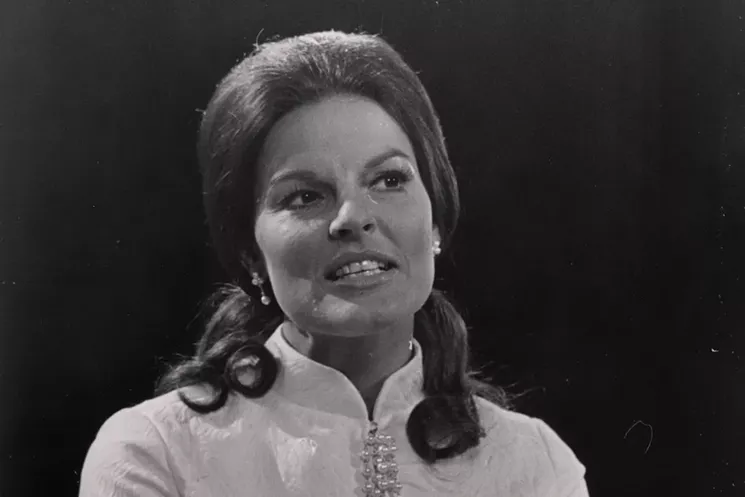
Anita Bryant led a "Rally for Decency" at the Orange Bowl to protest Jim Morrison's vulgar behavior.
Miami News Collection, HistoryMiami
Pinera, however, says it was more his own ambition that led to the shuttering of Thee Image.
"After a year in Miami, all these bands, especially our heroes Eric Burdon and Frank Zappa, said, ‘You're too good for this. You need to go to Los Angeles’ — which we did," Pinera explains.
Blues Image was signed to Atlantic Records, for which the group soon produced a hit, "Ride Captain Ride," which peaked at number four on the Billboard Hot 100 in 1970. Pinera later joined Iron Butterfly and Alice Cooper and still plays gigs to this day.
But back in Miami, the psych-rock crowd faced constant harassment.
"The Echo was known as a nondrug band, but with my Afro and clothes, I looked like I did drugs," Fedele says. "Once I was driving in Pompano and they pulled me over because they said my tag light was too bright. They arrested me for not being a Broward County resident, towed my car, and tore it apart searching for drugs."
Around that time, Fedele and the rest of the Echo relocated to New York City in search of success.
"We auditioned for labels, but we were already falling apart,” he says.
During one of the auditions, Jan Berry of the surf-rock group Jan and Dean invited Fedele to collaborate on a new project, but Fedele wanted to keep his student status to avoid being drafted into the Vietnam War. He graduated from the University of Miami in 1972 and continues to gig five to six nights a week in South Florida.
Weiss also managed to stay in the music industry and recently contributed music to the HBO series The Deuce. If he has one major regret, it's that Miami's psychedelic scene burned out so quickly.
"Had to be thousands of people down here in that scene," he says. "There was still plenty of LSD around, but once Thee Image closed, Miami's music changed. That was the end. If you wanted to listen to psychedelic music, you had to put on a record."

